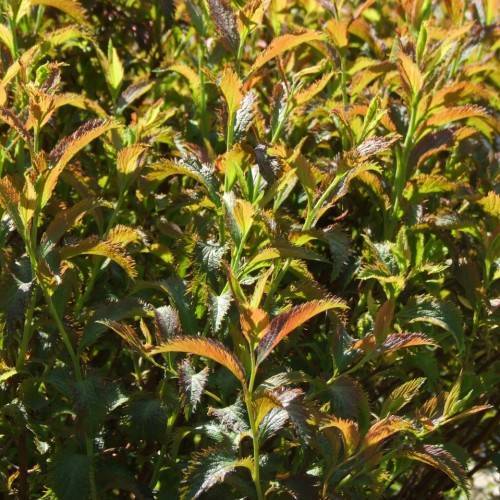
Japanese spiraea
Spiraea japonica 'Crispa'
Cycle:
Perennial
Watering:
Average
Hardiness Zone:
3 - 8
Flowers:
Flowers In Spring
Sun:
Full sun, Part sun/part shade
Soil:
Humus rich
Fruits:
Fruits In Summer Ready In Fall
Leaf:
Yes
Growth Rate:
Moderate
Maintenance:
Low
Drought Tolerant:
Yes
Care Level:
Medium
watering
Japanese spiraea should be watered deeply and thoroughly 2 times per week during summer months, and once per week during colder months. Make sure to check the soil before watering as it should be kept consistently moist but not soggy. To ensure deep watering, use a soaker hose or a watering can and water until the soil is moist 8-10 inches deep. During hot, dry weather, you may need to water more frequently.
sunlight
Japanese spiraea prefers full sun to part shade, and is best planted in an area that receives at least 6 hours of direct sunlight per day. Avoid extremely shady areas or spots with strong wind, as these can stunt growth. In cooler climates, Japanese spiraea should receive full morning sun and dappled shade in the afternoon. In hotter climates, an area with partial shade in the afternoon will be beneficial. During the spring flowering season, Japanese spiraea should receive full afternoon sun to ensure full blooms.
pruning
Japanese spiraea (Spiraea japonica 'Crispa') is 1 of the toughest shrubs and requires very little pruning. It can be pruned at any point between late fall and early spring, with the exception of the late spring and summer months, when it is in bloom. To keep this shrub healthy and attractive, it may need pruning to remove any dead or damaged branches, possibly to improve shape, or for the removal of any suckers or sprouts that can occur. If pruning is needed, make sure to properly sterilize your pruning shears before and after each use. Prune Japanese spiraea blooms just after they have finished blooming in late spring and summer. This process is called 'deadheading'. Prune the dead flower clusters by hand or with pruning shears at the base of the flower stem. Doing this will help to encourage more blooms in the following season. By pruning in late fall or early spring (with the exception of stems containing flower buds), you can also control a Japanese spiraea's size and shape. Pruning should be done sparingly for this type of shrub, as too much pruning will reduce bloom production.
